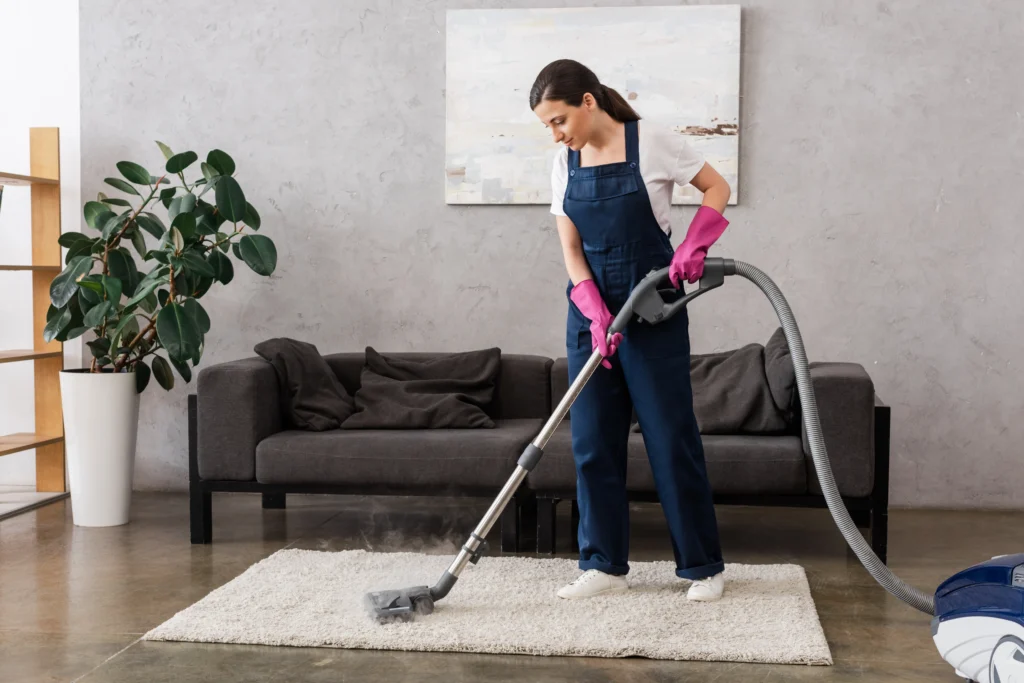Couches are one of the most frequently used pieces of furniture in any home, collecting dust, stains, and odors over time. Regular upholstery cleaning not only enhances the appearance of a couch but also extends its lifespan and improves indoor air quality. Whether dealing with fabric, microfiber, or leather upholstery, the right cleaning techniques can help keep a couch looking fresh and well-maintained. Let’s go over how to clean couch upholstery.

Understanding Upholstery Fabric Types
Before cleaning a couch, it is essential to determine the type of upholstery material. Many couches have a cleaning code tag located underneath the cushions or on the frame, providing guidance on the best cleaning methods. The most common codes include:
- W – Water-based cleaners can be used.
- S – Solvent-based cleaners are recommended.
- WS – Both water- and solvent-based cleaners are safe.
- X – Vacuuming or professional cleaning is required; water or solvents may damage the fabric.
Checking the manufacturer’s recommendations ensures that the upholstery is cleaned without causing damage or discoloration.

Routine Maintenance for Couch Upholstery
Regular maintenance helps prevent deep-set stains and dirt buildup. Vacuuming the couch weekly with an upholstery attachment removes dust, pet hair, and debris. Rotating and fluffing cushions can help prevent uneven wear and extend the life of the upholstery. For fabric couches, brushing the surface with a soft-bristled brush can help loosen dirt and restore texture.
Removing Stains from Couch Upholstery
When dealing with stains, it is important to act quickly before they set into the fabric. Blotting liquid spills with a clean cloth prevents the stain from spreading. Using a mild dish soap and water solution is often effective for water-based stains. For stubborn stains, a mixture of vinegar and baking soda can help break down the residue without damaging the fabric.
For microfiber couches, rubbing alcohol is often recommended for removing stains, as water can leave behind marks. Dabbing the area with a clean cloth dampened with alcohol and gently scrubbing in a circular motion can help lift stains while preserving the fabric’s texture.
Leather couches require specialized care to prevent drying and cracking. A damp cloth with mild soap can remove surface dirt, while a leather conditioner helps maintain softness and prevent wear. Keeping leather furniture away from direct sunlight and heat sources reduces the risk of fading and drying out over time.

Deep Cleaning Upholstery
Deep cleaning every few months helps remove embedded dirt, allergens, and odors. Steam cleaning is one of the most effective methods for fabric couches, as it lifts dirt without using harsh chemicals. Using a handheld steam cleaner or a professional-grade upholstery cleaner ensures thorough sanitation.
For those looking for a deeper refresh, professional upholstery cleaning services provide expert care tailored to different fabric types. This ensures a deeper clean that eliminates bacteria, allergens, and stains that household methods may not fully remove.
Preventing Future Stains and Wear
To protect couch upholstery from stains and everyday wear, applying a fabric protector can create a barrier against spills and dirt. Using removable, washable slipcovers can also help keep couches clean while making maintenance easier. Establishing household rules, such as no eating on the couch, can further reduce the risk of stains and prolong the life of the upholstery.
Useful Resources
- Find out how to safely clean different upholstery fabrics from Good Housekeeping.
- Learn about choosing the right upholstery cleaning products recommended by the EPA.

Conclusion
Keeping couch upholstery clean enhances both appearance and durability. Regular vacuuming, spot cleaning, and deep cleaning methods tailored to the fabric type help maintain freshness and hygiene. For the best results, professional cleaning services provide deep sanitation that extends the life of upholstered furniture, ensuring a clean and comfortable living space.


